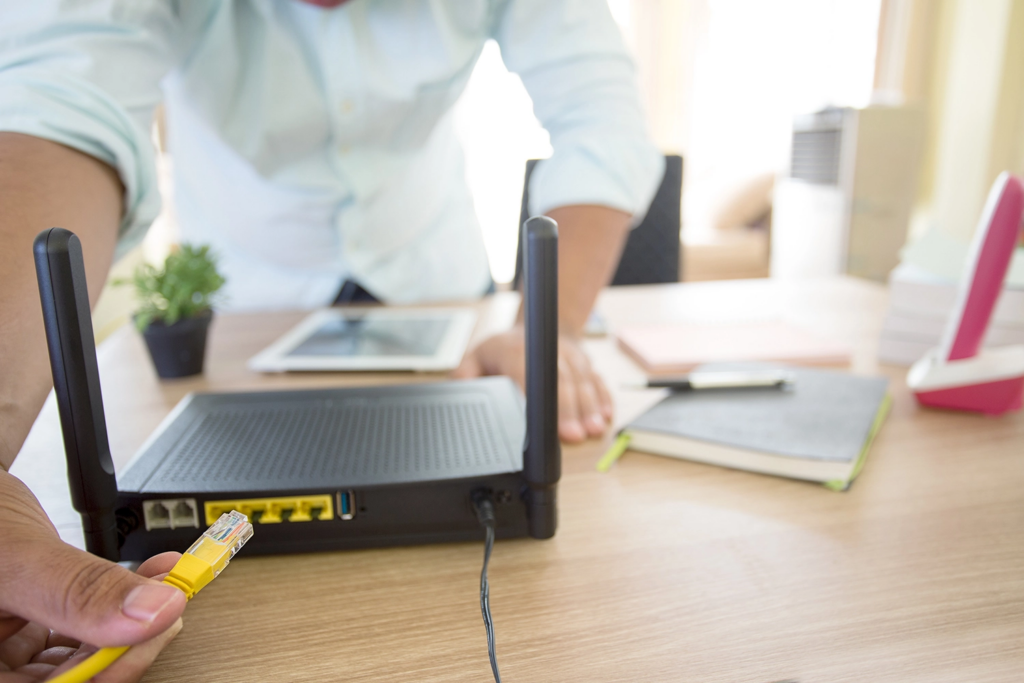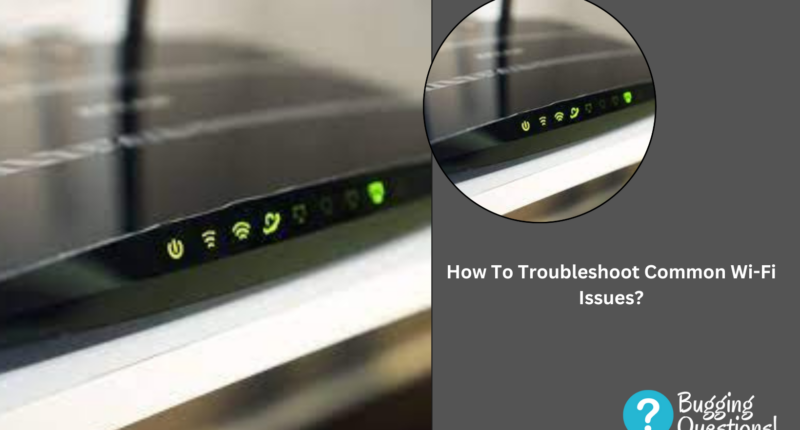How To Troubleshoot Common Wi-Fi Issues? In today’s digitally connected world, a stable and reliable Wi-Fi connection is essential for both personal and professional activities. However, encountering Wi-Fi issues can be frustrating and disruptive. Fear not, for we are here to provide you with expert guidance on troubleshooting common Wi-Fi issues.
By following the steps outlined in this comprehensive guide, you’ll be able to resolve most Wi-Fi problems and enjoy uninterrupted connectivity.

1. Check Your Wi-Fi Signal Strength
The first step in troubleshooting Wi-Fi issues is to assess the strength of your Wi-Fi signal. Weak signals can result in slow or intermittent connectivity. To determine the signal strength, you can follow these steps:
- Position yourself closer to the Wi-Fi router and check if the signal improves.
- Ensure that there are no physical obstructions, such as walls or furniture, blocking the signal between your device and the router.
- Consider relocating your router to a more central location in your home or office for better coverage.
2. Verify Wi-Fi Network Credentials
Sometimes, connectivity problems can arise from incorrect Wi-Fi network credentials. To ensure you’re using the correct credentials, follow these guidelines:
- Double-check the Wi-Fi network name (SSID) and password you’re entering on your device.
- If you recently changed your Wi-Fi password, make sure to update it on all devices attempting to connect to the network.
3. Restart Your Networking Devices
A simple yet effective troubleshooting technique is to restart your networking devices, including the Wi-Fi router and modem. This process can resolve various temporary glitches and configuration issues. Here’s how you can do it:
- Power off your Wi-Fi router and modem.
- Disconnect the power cables from both devices.
- Wait for approximately 30 seconds before reconnecting the power cables.
- Turn on the modem first and wait until it establishes a stable connection.
- Next, turn on the Wi-Fi router and allow it to boot up completely.
4. Update Router Firmware
Outdated router firmware can lead to compatibility issues and security vulnerabilities, affecting your Wi-Fi connection. To update your router’s firmware, perform the following steps:
- Access your router’s web interface by typing its IP address into your web browser.
- Navigate to the firmware update section.
- Check if a new firmware version is available on the manufacturer’s website.
- Follow the instructions provided by the manufacturer to download and install the latest firmware.
5. Adjust Channel Settings
Interference from neighboring Wi-Fi networks can result in decreased performance. By adjusting your router’s channel settings, you can potentially mitigate such interference. Here’s what you need to do:
- Access your router’s web interface as mentioned in the previous step.
- Locate the wireless settings or channel settings section.
- Experiment with different channels to find the one with the least interference.
- Save the changes and observe if the Wi-Fi performance improves.
6. Update Network Drivers
Outdated or incompatible network drivers can cause Wi-Fi connectivity problems. To update your network drivers, follow these steps:
- Identify the manufacturer and model of your network adapter.
- Visit the manufacturer’s website and navigate to the support or downloads section.
- Locate the latest driver for your specific adapter model and operating system.
- Download and install the driver according to the provided instructions.

7. Disable Power-Saving Features
Certain power-saving features on your device may interfere with the Wi-Fi connection, causing instability or disconnections. To ensure optimal performance, consider disabling these features temporarily. Here’s how you can do it:
- Go to your device’s settings menu.
- Locate the power-saving or energy-saving options.
- Disable any settings that may affect Wi-Fi connectivity.
- Monitor the Wi-Fi connection after making these changes to see if the issue is resolved.
8. Clear DNS Cache
Issues with the Domain Name System (DNS) cache can sometimes disrupt your Wi-Fi connection. Clearing the DNS cache can help resolve such issues. Follow these steps to clear the DNS cache:
- Open the Command Prompt or Terminal on your device.
- Enter the following command: “ipconfig /flushdns” (Windows) or “sudo dscacheutil -flushcache” (Mac).
- Press Enter to execute the command.
- Restart your device and check if the Wi-Fi connection improves.
9. Reset Network Settings
If all else fails, you can try resetting your network settings to their default configurations. This process will erase all saved Wi-Fi networks and their associated settings. Here’s how you can reset network settings:
- Go to your device’s settings menu.
- Look for the network or connectivity options.
- Find the option to reset network settings.
- Confirm the action and allow your device to restart.
- Set up your Wi-Fi connection again and check if the issue persists.
10. Contact Your Internet Service Provider (ISP)
If you’ve exhausted all the troubleshooting steps and are still experiencing Wi-Fi issues, it may be time to reach out to your Internet Service Provider (ISP). They can assist you in diagnosing and resolving any potential issues on their end, such as network outages or connectivity problems.
Remember, each Wi-Fi issue may have unique causes and solutions. It’s crucial to adapt these troubleshooting steps based on your specific circumstances. By following the steps outlined in this guide, you’re well-equipped to resolve common Wi-Fi issues and enjoy a stable and reliable internet connection.
Continue to check our website (buggingquestions.com) for more articles of this kind. And, please use our comment section as well, we would love to hear from you.









